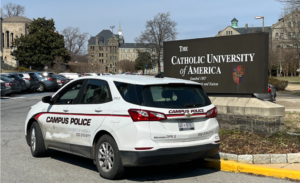Same Song, Different Verse: Killing of Daunte Wright Results In Exacerbated Tensions and Increased Controversy

Image Courtesy of MinnPost
By Justin Lamoureux
In recent weeks, Americans have been captivated by the trial of Derek Chauvin, a former Minneapolis police officer recently found guilty in the death of George Floyd in an incident that garnered national attention (and incited substantial controversy on both sides of the political spectrum). This week, however, divisions caused by the affair were exacerbated when law enforcement fatally shot 20-year-old Daunte Wright at a traffic stop.
This incident occurred in Brooklyn Center, Minnesota – roughly 10 miles from where Floyd was killed last year. The fatal dispute ensued on Sunday April 11, when officers pulled Wright over for a traffic violation related to expired registration tags. While doing so, they learned that a warrant existed for Wright’s arrest. According to Chief Tim Gannon of the Brooklyn Center Police Department, Wright stepped back into his car as officers tried to apprehend him, and a brief struggle ensued. Body camera footage released to reporters the following day showed one officer pointing a handgun at Wright and shouting “taser.” After the car pulls away, the officer can be heard yelling an expletive, followed by “I just shot him.”
After Wright was shot, the car traveled several blocks and struck another vehicle. Police and medical workers pronounced him dead at the scene. Wright’s mother, Kate, told reporters that he called her while being pulled over. Evidently, Wright believed that he was being stopped “because he had air fresheners hanging from his rearview mirror.” After her son put down (or dropped) his phone, she claims to have heard “scuffling” and an officer telling Wright not to run. Someone then ended the call. When she called back, a woman who had been in the car with Wright answered, informing her that he had been shot.
The officer who shot Wright was later identified as Kim Potter, a 26-year veteran of the Brooklyn Center Police Department and president of the local police union. At first glance, few would have questioned Potter’s apparent decorum: she was involved in training newly recruited officers and also traveled across the state with the Minnesota Law Enforcement Memorial Association’s honor guard, which marches at funerals and memorials for officers killed in the line of duty. Law enforcement claims that Potter shot Wright accidentally, having mistakenly drawn her gun instead of her taser. This argument has received fierce criticism from civil rights activists and legal experts. Reverend Al Sharpton, standing alongside the Wright family’s attorney, expressed disbelief that a seasoned police officer proved incapable of differentiating
between a gun and a taser, and posed the question of “how was she even on the force that long?”
Potter was arrested on Wednesday, and charged with second-degree manslaughter. However, she was released from Hennepin County jail later that evening after posting a $100,000 bond.
Wright’s brother, Dallas Bryant, expressed disappointment with the lenient nature of these charges but noted that “I’ll get any win I can get at the moment.” He continued to say that his family “wants peace,” and intend to approach legal proceedings “the right way.”
Speculation regarding the future of Potter’s career was short-lived, as she submitted her letter of resignation Tuesday morning. According to Brooklyn Center Mayor Mike Elliott, the city did not encourage Potter to resign but would likely have fired her. Apparently, this was not the first time she was implicated in a fatal incident. Two years ago, she was among the first officers on the scene of a police shooting in which officers killed an autistic man who allegedly grabbed a knife. It has been claimed that Potter instructed two officers involved with the shooting to “exit the residence, get into separate squad cars, turn off their body worn cameras, and to not talk to each other.” Chief Gannon also resigned from his post that day.
In the aftermath of this shooting, U.S. Attorney General Merrick Garland announced that the Department of Justice will take a more rigid stance on police accountability. To start, he plans to rescind a Trump-era memo that limited the use of consent decrees that hold police departments accused of misconduct accountable. Garland intends to replace it with a memorandum that “makes clear that the Department will use all appropriate legal authorities to safeguard civil rights and protect the environment, consistent with longstanding Departmental practice and informed by the expertise of the Department’s career workforce,” as he described in a statement on Friday. Essentially, Garland wants to reaffirm the department’s perceived commitment to ensuring equal justice for all and their intent to utilize the legal tools available to them in doing so. Among these are consent decrees, which a judge can use to keep tabs on a police department to make sure it’s in compliance with the court-ordered agreement. The Trump Administration suspended the use of such mandates, expressing concerns regarding their effectiveness.
Wright’s shooting further solidifies the relevance of police conduct as a political issue. In recent years, a number of instances where people died as a result of perceived misconduct at the hands of law enforcement has led to increased scrutiny of their practices. Of course, calls for greater accountability have been fraught with controversy. What’s more, this incident once again places the Black Lives Matter movement in the spotlight. Since Wright’s death, a number of protests have erupted across the country; many have led to clashes between demonstrators and police. Perhaps most importantly, however, this event will fuel additional debate regarding the precedents of America’s legal system. Moving forward, practices like qualified immunity (which grants police officers leniency in some cases involving the death of a suspect) and the alleged use of racial profiling will certainly remain on the forefront of public discourse.






